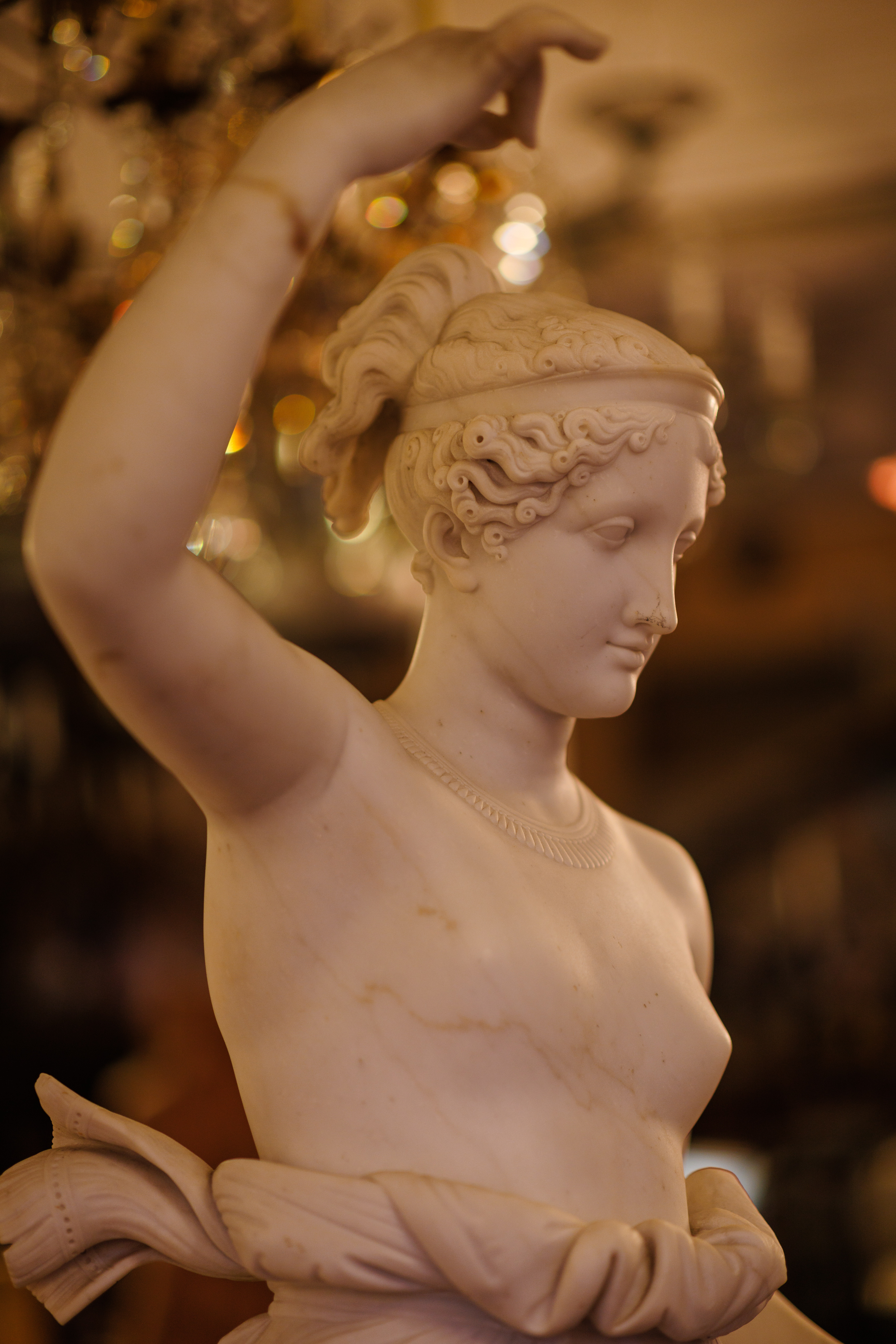
Italian Neoclassical sculptor renowned for transforming marble into lifelike forms of idealized beauty. His work embodies grace, restraint, and technical perfection, elevating ancient themes into modern icons of purity and emotion.
Canova’s sculptures reveal exceptional craftsmanship—subtle chisel marks smoothed through hours of pumice and linen polishing, resulting in surfaces that seem to breathe. The marble often bears faint translucence, imitating skin under soft light. Minor age-related toning and natural veining in the Carrara stone enhance the vitality of form without diminishing its integrity. His technical mastery achieved a harmony between structural precision and emotional serenity unmatched in European sculpture.
The marble Hebe stands in perpetual motion—her back foot lifted in approach, her right arm raised to pour from a now-absent oinochoe, her left hand offering a kylix as she advances toward the viewer. The chiton clings to her form, cascading in sculpted folds that seem to defy gravity, while a delicate necklace and diadem crown her serene countenance. Her expression, both generous and commanding, evokes the divine youth she personifies. As cupbearer to the gods, Hebe dispensed ambrosia and nectar; here, she extends the same offering to those who behold her. A faint band of discoloration on her wrist—the sole imperfection in an otherwise flawless marble—anchors her divinity to human history. Beyond its aesthetic grace lies a remarkable story. Discovered by L’Enfant Gallery founder Peter Colasante decades after first glimpsing her in a New York window, this Hebe traveled from the Vanderbilt collection in Annapolis through Michael Hall Fine Arts in New York before finding its present home. Scholarly correspondence from Hugh Honour, the eminent Canova expert, strongly suggests this sculpture was executed by Canova’s own hand rather than a studio assistant. With physical mastery aligning closely to the fourth Hebe (1817, Forlì) and the National Gallery’s confirmation that five life-size versions exist, this marble stands as a probable fifth—an embodiment of both myth and rediscovery.
